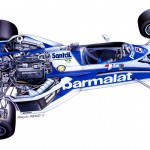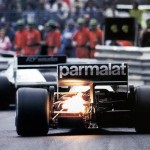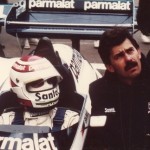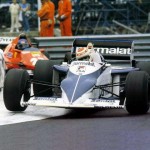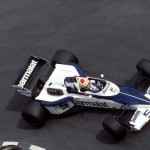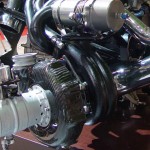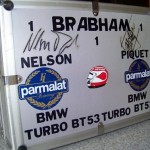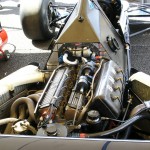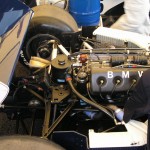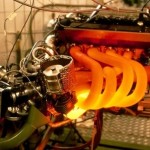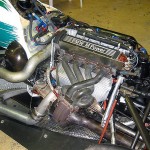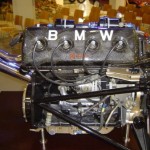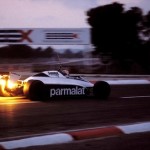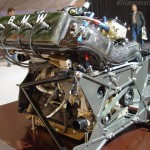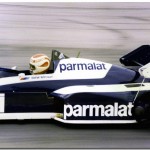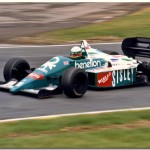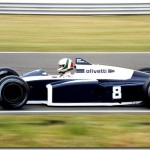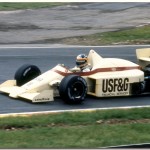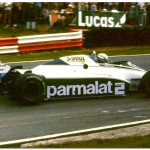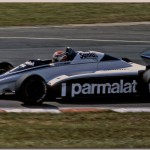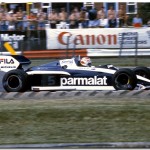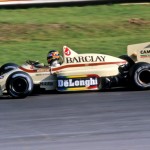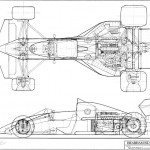History of BMW in Formula 1
BMW has been active in Formula 1 since 1982 but, sadly, they are now calling it quits. Although the recent campaign could be called a success of sorts, it was the turbo era of the 1980s, when they supplied their superb engines to the Brabham, Arrows and Benetton teams, that many remember as their best years.
On 24th April 1980, BMW announced the company’s first involvement as an engine supplier in Formula One. Based on a production four-cylinder engine block, Paul Rosche designs a four-valve engine with the capacity reduced to 1.5 litres. Running on a special fuel mixture and equipped with a turbocharger, the unit starts with a horsepower output of 650 bhp, but later it delivers up to 1400 bhp.
Few engines can claim to have a 26-year career, during which it progressed from 75 bhp in the BMW 1500 Neue Klasse of 1961 to 1400 bhp in the Brabham BMW BT52. Legend has it that BMW’s motorsport engineers chose road car engine blocks which had already accumulated 60,000 plus miles on them and then left them out in the rain to rust and toughen up. Once they were brought back into the factory they began rebuilding them into flame spitting turbo charged monsters
A car powered by a BMW turbocharged engine won its first Grand Prix at Canada in 1982, driven by Nelson Piquet, but the victory was hollow due to the loss of Riccardo Paletti who was horribly burnt to death on the starting grid.
Ground effect is banned at the end of the 82 season and a new set of regulations are introduced for 1983 that sees Gordon Murray produce the now famous arrow shaped Brabham BMW BT52. To reduce cornering speeds, the cars’ underfloor had to be equipped with a flat plank, making the wide sidepods previously used obsolete. Murray designs an ultra flat, streamlined chassis and to make better traction, the radiators were mounted almost alongside the cockpit while a delta shaped front wing provided additional front end downforce.
Nelson Piquet loves the new car and wins the season opener, his home race, at Rio de Janeiro. The BT52 is consistently developed and by the French Grand Prix, the cars of Piquet and his team-mate, Riccardo Patrese, are equipped with carbon brake discs and six-speed gearboxes. The Brazilian makes perfect use of these new components by finishing second and looks like a contender for the title.
Renault’s Alain Prost and the Ferrari drivers, René Arnoux and Patrick Tambay, turn out to be extremely competitive rivals making for a thrilling season. However at the end of the day, Piquet prevails. Thanks to his consistently good results throughout the season and further wins at Monza and Brands Hatch, he secures the title in the final round, held at Kyalami, South Africa. BMW are World Champions.
From1984 to 1987 the BMW power plant appears in the back of Brabhams, Arrows and Benetton F1 machinery, with Gerhard Berger taking the last win at Mexico in 1986 for Benetton. However, at the end of 1987 the production of this BMW F1 engine is stopped. Formula One’s turbo era is over and BMW bails out.
Following a twelve-year break, BMW celebrates its Formula One comeback with WilliamsF1 in 2000. Up to the end of the 2005 season, the BMW WilliamsF1 Team secures a total of 10 Grand Prix wins and 17 pole positions, but no World Championship glory. From 2006 a new BMW controlled team appeared on the Formula One grid, the BMW Sauber F1 Team. However the team scores just one win when Robert Kubica triumphed in the Canadian Grand Prix in 2008.
So another chapter is closed on BMW’s Formula One involvement with the stunning success of 1983 remaining the high water mark.
A good video about the M10 engine can be found here
Photo Credits : BMW Historisches Archiv, joosten, Chris Cole/Allsport, Wouter Melissen, antsphoto, Joachim Kutt

